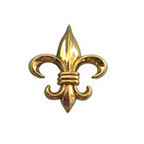Build Silverware Collection: Tips And Tricks From Antique Silver Dealers
One of the most reliable and long-standing investments for collectors has been antique silver because of its intrinsic value. The timeless history of use plays a large role in sparking interest with Silver being highly sought after for its utility to modern society and industries.
The fine craftsmanship and desirability of silver pieces endures the test of time, so, many antique silver buyers covet antique silverware. The scrap value of silver antiques has changed the way antique silver is valued and perceived with provenance and rarity being the important factors.
Build Your Collection With Antique Silverware Appraisal
Silver Purity and Plating
When it is about collecting silver, understand the different types and know that it’s very rare to find solid silver pieces. It is because silver is too soft to be durable. Most silver objects that you find are in fact sterling silver or silverplate.
Types of silver include:
- Fine: Pure silver is 99.9 percent silver, the rest comprising of trace impurities. Mostly used for bullion bars and investment in silver, fine silver is too soft to be used in much else.
- Sterling: Sterling silver comprises of 92.5 percent silver with the rest being various metals, such as copper. The piece is durable with an ability to hold a shape throughout its lifespan with proper care.
- Silver plate: If an item is silver-plated, it has a thin layer of silver covering some kind of base metal.
Lifestyle and Focus
As per lifestyle and personal tastes, work to find pieces that make the most sense. “Will I be using my silver every day, or for special occasions?” is the question to ask before you decide. A good place to start is to settle on a focus area while collecting silver. It could be anything from style, era, maker or pattern and type of silver.
Provenance
The piece is considered more valuable with any element of engraved armorials, initials, or dedications as it adds to the provenance. For instance, an initial or engraving associated with a noble or royal family, that piece is more highly sought-after by certain antique silver appraisers.
Sometimes these markings were removed with a patch or method of wearing, which detracts from the piece’s value. Additionally, be wary of engravings that were dishonestly added later on, which definitely looks out of place and sharp compared to the piece as a whole.
Authenticity
Antique silver hallmarks make a good way to determine the genuineness of a piece with date and origin. However, if the piece is unmarked does not make it fake, but as a collector you need to educate yourself to be protected. If a seller proves that a piece is from a famous maker such Hester Bateman, or Paul Storr, then can ask for top dollar.
Silver Melt Value
The melt value is a good starting point to understand value and price fluctuations although your items being antiques are almost certainly are worth more than the melt value. Trusted antique silver buyers will tell you the value of sterling rises and falls as per the melt price for silver metal, including antiques. It’s a good time to buy silver pieces when the price is low. This, however, is of no concern if you’re interested in silver plated items.
Condition
Look for dents, broken pieces, heavy corrosion and scratches on base metal, as all effort to have a defined collection would instantly lose value and should generally be avoided (unless the piece is particularly rare, which may make up for its lacks in condition).
Look closely at the:
- Rims and joints with spouts, handles and feet, which are most prone to damage.
- The surface patina should be flawless without any breaks in patination.
- If the piece is almost unusually white, it has likely been over-cleaned with improper solutions.
- If the tarnish is present prior to purchasing, be cautious of other flaws that it could be hiding to lower its value and usability considerably.
